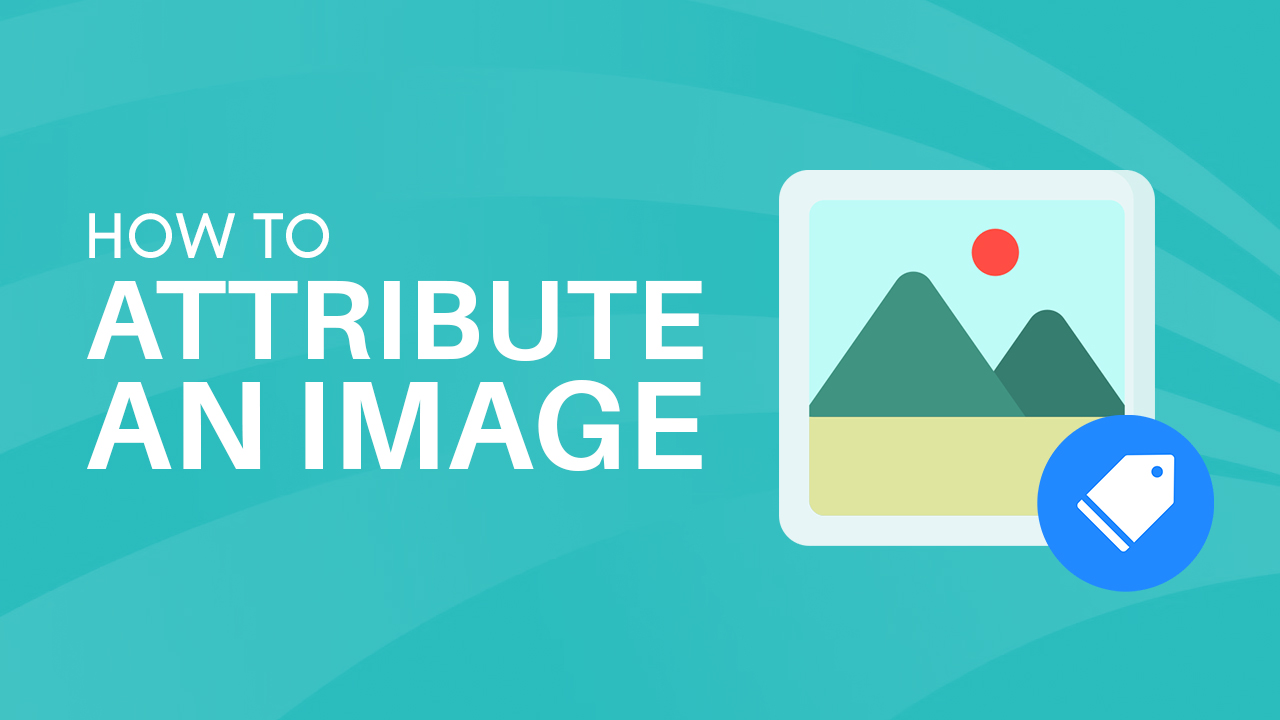How to Attribute an Image
By Jaime
Published March 13, 2023
 How to Attribute an Image
How to Attribute an Image
Inside this article
The use of creative works can sometimes be tricky, but with the right guidance, it doesn't have to be! In this article, we delve into the basics of image attribution - how properly giving credit is not only important for respecting creators' work, but also for making sure you stay onside legally and ethically.
This is especially important to do when you intend to use some background photos for your websites, blogs, products, videos, and more. So don't worry about getting your attributing wrong – keep on reading our helpful guide to learn how to get it right.
Key Takeaways
- Proper attribution for Creative Commons images can be achieved by following the TASL method, which involves providing the Title, Author, Source, and License of the photo.
- If modifications have been made to the original image, include a statement about the changes. If the owner is unknown, attribute to the source and license. For images not covered by Creative Commons, follow the guidelines of the specific license or agreement for correct attribution.
- You can attribute images used in Blog Posts, Videos, Social Media Posts, Apps, and Printed Products.
Understanding Copyright
Before getting started with attributing images, it's critical to be aware of copyright and fair use laws. Copyright protects the original works - including photos - of the copyright owner from unauthorized duplication or usage. However, there is a chance that limited use may qualify as "fair," especially if intentions include education, commentary, or critique. Although fairness can ultimately depend on individual circumstances in certain cases, it’s wisest not to take risks when using copyrighted materials without permission.
Creative Commons License and Public Domain materials provide alternatives to copyrighted material. CC licenses allow creators to share their work with others while retaining certain rights. There are several types of CC licenses, each with its own guidelines and requirements. Public Domain materials are not protected by copyright and can be used freely without attribution.
How to Properly Attribute Creative Commons Images
Attributing Creative Commons Images
When it comes to attributing images found in videos, apps, blogs, and other sources, it's important to follow proper attribution practices. This helps to inform your viewers on crediting and helps search engines find the materials you attribute. One commonly used method for attribution is the TASL method, which stands for Title, Author, Source, and License. Try using the following format:
- T - Title: The title or description of the image or content being used.
- A - Author: The name of the person or organization who created the image or content being used.
- S - Source: The place where the image or content was found, such as a website link or publication. You may use a hyperlink directly on the title and author for a cleaner attribution.
- L - License: The type of license that the image or content falls under, such as Creative Commons or public domain.
Here is a good example of how you can use the TASL method when attributing:
 "Beautiful Spring Cherry Blossom Trees Wallpaper" by Wallpapers.com is licensed under CC BY 2.0.
"Beautiful Spring Cherry Blossom Trees Wallpaper" by Wallpapers.com is licensed under CC BY 2.0.
Attributing with Modifications to Creative Commons Images
If you have made modifications to a Creative Commons image, it's important to include a statement indicating the changes that have been made. The attribution should still include the name of the original creator, the title of the work, and the specific CC license, but should also include information about the modifications made to the image. This information should be clearly visible and prominently displayed along with the original attribution.
Example:
 "Beautiful Spring Cherry Blossom Trees Wallpaper" by Wallpapers.com is licensed under CC BY 2.0, Brightened from original
"Beautiful Spring Cherry Blossom Trees Wallpaper" by Wallpapers.com is licensed under CC BY 2.0, Brightened from original
Attributing Creative Commons Images with Unknown Owners
If you are unable to identify the original creator of a Creative Commons image, it's still important to provide attribution to the extent possible. When referencing an image, be sure to provide attribution to the source link and include which license applies. Additionally, supply details like title or description – this little extra effort helps pay tribute to whoever created that incredible work!
Attribution for Images Not Covered by Creative Commons
If you are using an image that is not licensed under Creative Commons, it's still important to provide correct attribution. In this case, you should follow the guidelines set forth by the specific license or agreement under which the image is being used. This may involve providing the name of the creator, the source of the image, and any other relevant information about the image. It's important to carefully review the terms of use for the image and ensure that you are following the guidelines for attribution as closely as possible.
Using images is an important part of creating engaging content across different platforms, but it's also important to give proper credit to the creator of the original work. As a general rule of thumb, the attribution details should include the name of the creator, the title of the work, the source of the image (including links, if any), and the license information, if applicable.
Websites and Blogs
- This can be websites of varying topics, blog pages, e-books, newsletters, etc.
- When publishing on a site or personal blogs, attribute directly below the image or in a caption next to it.
- Alternatively, you can include the attribution at the end of the post or in a separate "Credits" or "Sources" section.
- This can be anything from Twitter, Instagram, Facebook, Tumblr, and many other social media platforms.
- Include photo attribution in the post caption or as a comment.
- Alternatively, you can include the attribution as a watermark on the image itself.
Videos
- This can be anything from online video sites like YouTube, Vimeo, and Dailymotion, or even for offline videos.
- Include photo attribution in the video itself, such as in a lower third or end of the video credits.
- Alternatively, you can include the attribution in the video description or as an overlay during the video.
Apps
- This can be anything from mobile or desktop apps, games, etc.
- Include image attribution in the app credits or in a separate "Credits" or "Sources" section within the app.
- Add the attribution on the website where the app is available for download. Or, in the description field of the platform or marketplace being used to post the app.
Printed Products
- This can be anything "offline" that's not on the internet, e.g.: Books, clothing, posters, advertising, etc.
- Include image attribution directly below the image or in a caption next to it.
- Alternatively, you can include the attribution in a separate "Credits" or "Sources" section within the printed product.
Conclusion
Giving credit where it's due is essential - not just ethically, but legally too. When using images online, do the right thing and ensure they are either Creative Commons or in Public Domain; otherwise, abide by copyright laws and fair use guidelines. For CC materials, incorporate the TASL method to attribute correctly while noting any changes made. If you can't find who owns an image, then cite both your source as well its license type.
Remember that different platforms have their own attribution rules: take a few minutes to familiarize yourself with relevant practices for giving credit properly (and lawfully) when working with pictures on digital spaces of all kinds.